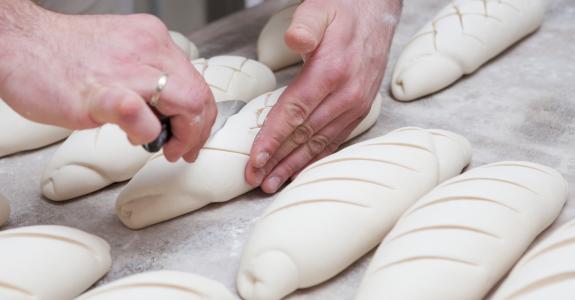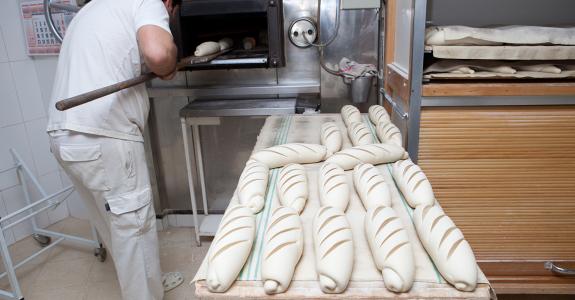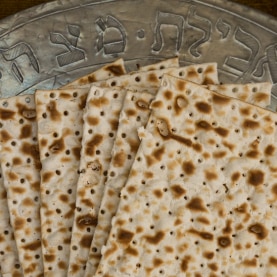Bread
Bread comes in all shapes, sizes and varieties and is a staple food for many people. The Indo-European root of its name, 'pa', actually means food. Bread is made by mixing together flour, water, salt and leaven (or artificial yeast). The dough is then kneaded, left to prove and baked in an oven. Kneading and proving are necessary steps in bread making, helping both to increase the elasticity of the dough and to make it rise.
Kneading and proving, two necessary steps in bread making
Bread is a staple food in the Western diet. Its Indo-European etymological origin, pa, actually means food. Bread is made by mixing together flour, water, salt and leaven or artificial yeast. The dough is then kneaded, left to prove and baked in an oven. Kneading and proving are necessary steps in bread making, helping both to increase the elasticity of the dough and to make it rise. In today’s bakeries, dough is generally kneaded by machine, then left to prove slowly in the refrigerator. This process is called ‘controlled proofing’. When the dough is sufficiently elastic, it is ready for the oven. The dough is then shaped into the desired form and the surface is scored to give it colour and a variety of textures. It is then baked for ten to twenty minutes at 250°C depending on its size.
Thanks to advances in technology,bakers now work considerably less during the night as they can keep the dough they prepared the day before in the refrigerator. Moreover, intensified kneading has reduced dough collapse before baking.
Bread varieties
There is a large variety of different types of bread available, depending on the grain chosen (wheat, rye, blend of grains), how the flour is milled and the extraction rate (volume of flour extracted in relation to the volume of wheat) as well as whether or not leaven or yeast has been used.
- White bread is made with fine flour which comes exclusively from the endosperm of the wheat grain (25% of the grain).
- Wholemeal bread is produced from flour which contains almost the entire grain (98% of the grain).
- Brown bread contains brown flour which is a blend of fine flour and wholemeal flour.
- Farmhouse bread contains white flour or brown flour and sometimes rye flour.
- Wheaten bread is made from coarsely-milled grain.
All of these different types of bread can be flavoured with seeds (nuts, poppy seeds, sesame seeds, pumpkin seeds or sunflower seeds), fats, sweeteners (honey or sugar), dairy products (butter or milk), dried fruit or authorised additives. They can be different shapes (round, long, oval, square, long and thin sticks, baguettes, crowns and plaits) with or without decoration (scored diagonally or in a criss-cross pattern) and different sizes. In addition to everyday bread, there is also a wide range of festive breads for traditional and religious celebrations.
CALVEL, Raymond, 1979. Le pain. Paris : Presses universitaires de France.
COLLISTER, Linda, BLAKE, Anthony, 1994. Le grand livre du pain. Pains, tartes et gâteaux. Paris : Éditions Gründ.
DRAPON, Roger, 1999. Notre pain quotidien. Paris : AGP.
RADIO TÉLÉVISION SUISSE (RTS), 2012. Le pain. Nous sommes tous dans le pétrin. A bon entendeur [en ligne]. RTS, 17 janvier2012. [Consulté le 07 septembre 2015]. Disponible à l’adresse : http://www.rts.ch
SUISSE PAIN, DATE ?. Fabrication du pain [en ligne]. [Consulté le 04 septembre 2015] Consulté à l’adresse : http://www.schweizerbrot.ch
VITAUX, Jean et FRANCE, Benoît (éd.), 2008. Le pain. In Dictionnaire gastronomique. Paris : Presses universitaires de France. pp. 666-667.










